I used an electric car to drive to my brother’s wedding — and I barely made it
My Nissan Leaf is great, but it's not so good at going long distance
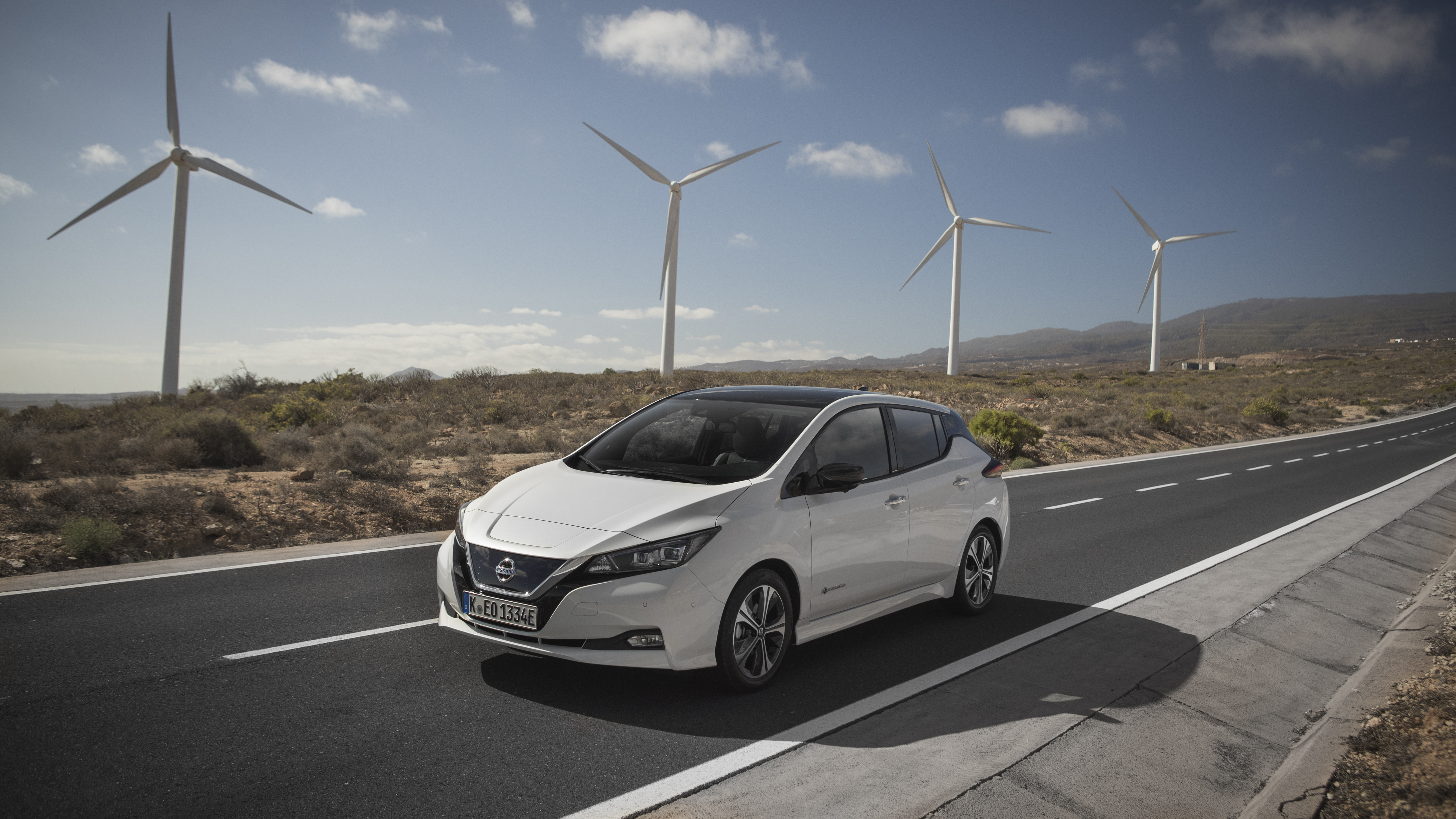
Earlier this year, after several years of living without a car, I took the plunge and bought an electric car. A 40kWh Nissan Leaf to be precise, which has an advertised range of 168 miles. It was designed to be a pretty standard “getting around” car, so I didn’t have to walk or get public transport everywhere.
During the COVID pandemic, that translated to going to and from the supermarket, or picking up supplies I couldn’t otherwise get delivered. But I recently had to make a 250-mile round trip in one day so I could attend my brother’s wedding. I was pretty confident I’d be able to make it without much hassle, but things didn’t exactly go according to plan.
- These are the best electric cars you can buy in 2021
- Electric car charging stations near me: Where to charge your electric car
- Plus: VW ID.3 price, range, specs, charging and more
Getting to the church on time
At 100% charge, my car displayed an estimated range of 152 miles. Considering the church was only 125 miles or so away, I figured I should be able to make it there quite comfortably. Even so, I figured it was a sensible idea to stop somewhere along the way to top up my battery.

That way I’d be able to get to the church and have enough power leftover to comfortably get myself to another rapid charger and do a proper recharge on the way home. After all, I was travelling into the Welsh countryside, where the EV charging infrastructure isn’t the best.
I picked a service station 74 miles into the journey, and figured half an hour would be more than enough time to give my battery the necessary pick me up. What I didn’t count on was the fact the Leaf’s range estimate doesn’t account for the fact I’d be driving at 70 miles per hour, the speed limit on British motorways.
Needless to say that car sucked up power like the worst gas-guzzler. And it started pretty much straight away. Within about 15-10 minutes of driving along the motorway I realised I probably wasn’t going to get anything close to 150 miles out of the car.

It’s a good thing I’d already planned out my recharge break in advance, because that battery hit the 20% mark a couple of minutes before I reached the station. My car claimed that would only have taken me an extra 33 miles, though I imagine it would have been less considering how my power reserves had been depleting.
Get instant access to breaking news, the hottest reviews, great deals and helpful tips.
The half hour break I’d allocated turned into a full 45-minute recharge session on the single rapid charger that service station had. Thankfully I’d left home early, so an extra 15 minutes wasn’t going to make much difference. With my Leaf now showing 90% charge, I hit the road for the remaining 50 miles of my journey.
Which was pretty uneventful. Aside from some confusion over where the darn church was —and half an hour of driving around in a very large circle — I managed to get there with a good 45 miles left on the meter. It wasn’t enough power to get me back to that same service station, but it was more than enough to travel five miles to the nearest compatible charger.
So I got to sit back, relax, and watch my brother get married. Well, relax as best as you can sitting in a hard wooden pew.
EV charging is still losing to the old-fashioned gas tank
While the physical number of chargers is quite impressive, prospective EV drivers will face issues depending on where they actually live. For instance, my local area has about a dozen compatible EV chargers within a five minute drive of my house. But the Welsh countryside, where I was heading, had very few.
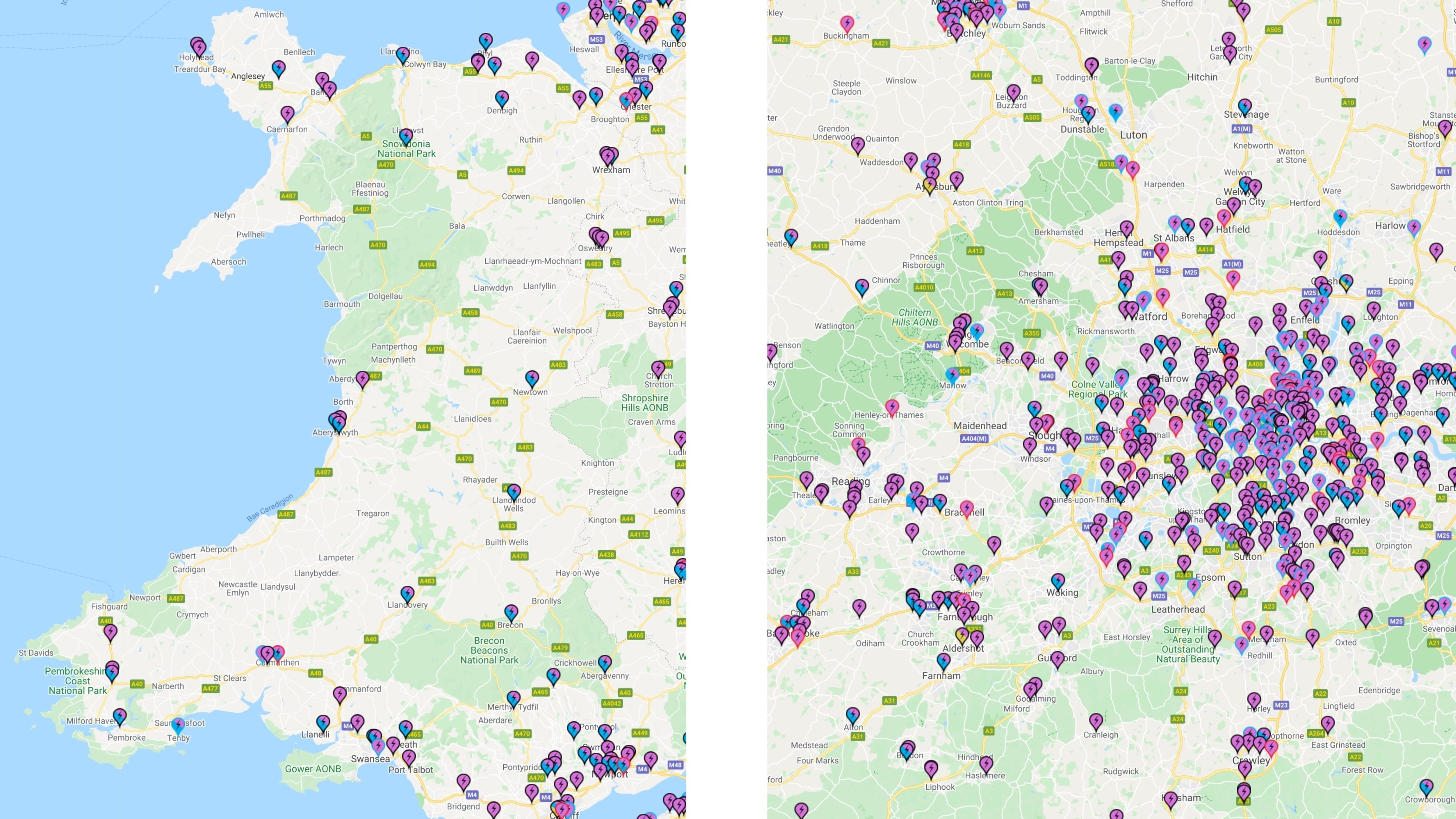
To complicate matters, there are dozens of different charging networks running across the UK — more than70 by my rough count. Those networks have their own charging stations, which in turn generally need to be used by a smartphone app. Naturally each network has its own app, and you won’t be able to use their chargers until you register and hand over your credit card details.
During my trip I experienced problems with the two different apps I needed to use to recharge. Not only were they both quite slow to load, but, one of them completely crashed on me. It kept telling me to follow the instructions on the charging station and wouldn’t go back to the home screen until I restarted my phone.
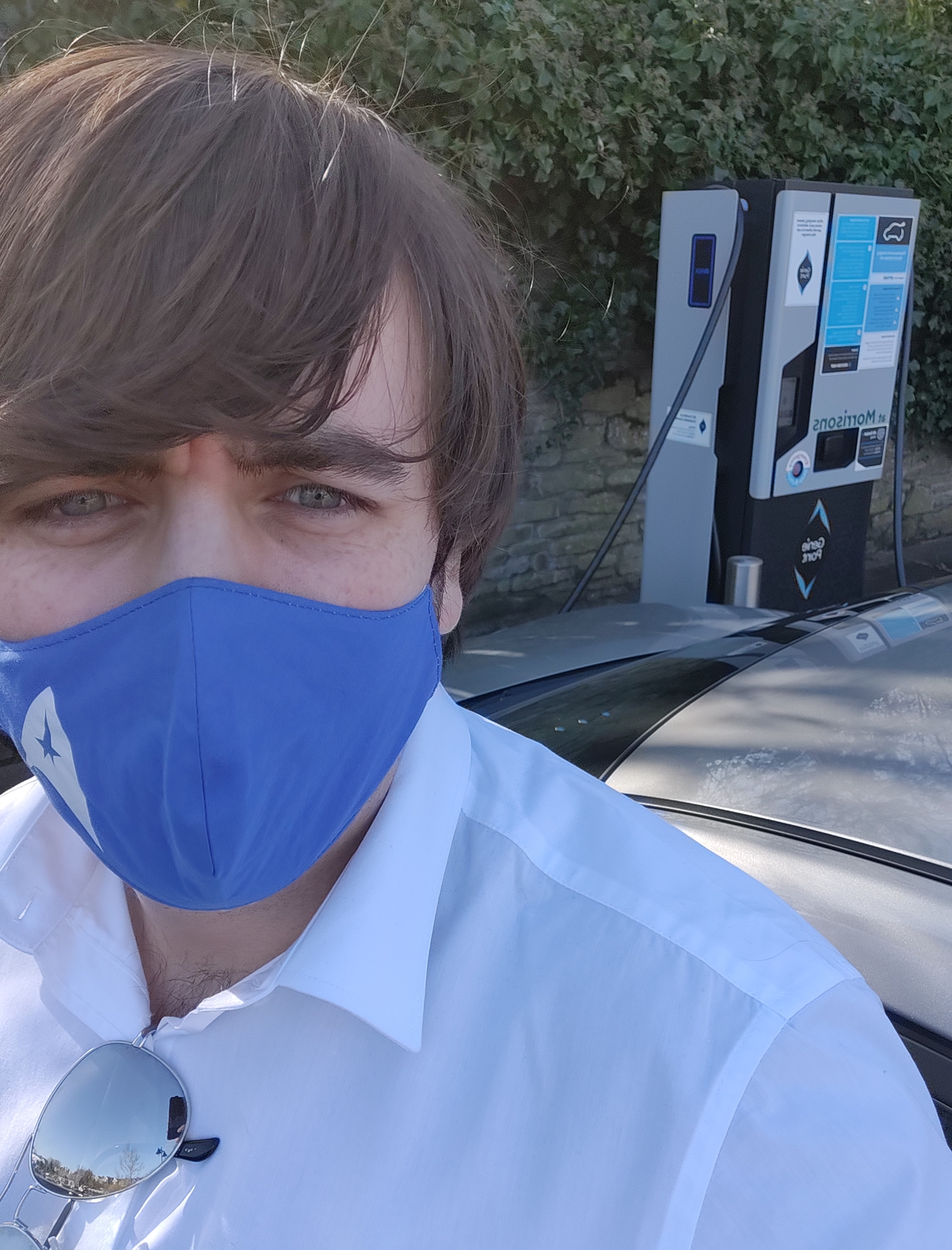
It’s one of those occasions where gas stations still have the advantage. They’ve been around for so long that the systems they have in place (usually) run quite smoothly. Plus they have EVs well and truly beaten when it comes to time. That’s because Lithium batteries can only charge so quickly without overheating, and excess heat is absolutely detrimental to the long term health of the battery.
Even if there’s a wait to get to a free pump, filling your tank up with gas takes no more than five minutes. It can take up to an hour to top off my Leaf with a compatible 50kW rapid charger.
Nissan claims that you’ll go from 20 to 80 percent in an hour, though in my experience it seems to be a little bit faster. Regardless you won’t be able to hit 100% if you’re out on the road, even on a rapid charger. Getting those final few percentage points is a very slow process, and the time you’d need to invest just isn’t worth it.
Plus, even if my Leaf had been able to handle charging speeds above 50kW, I may not have been able to find a charger that would let me.
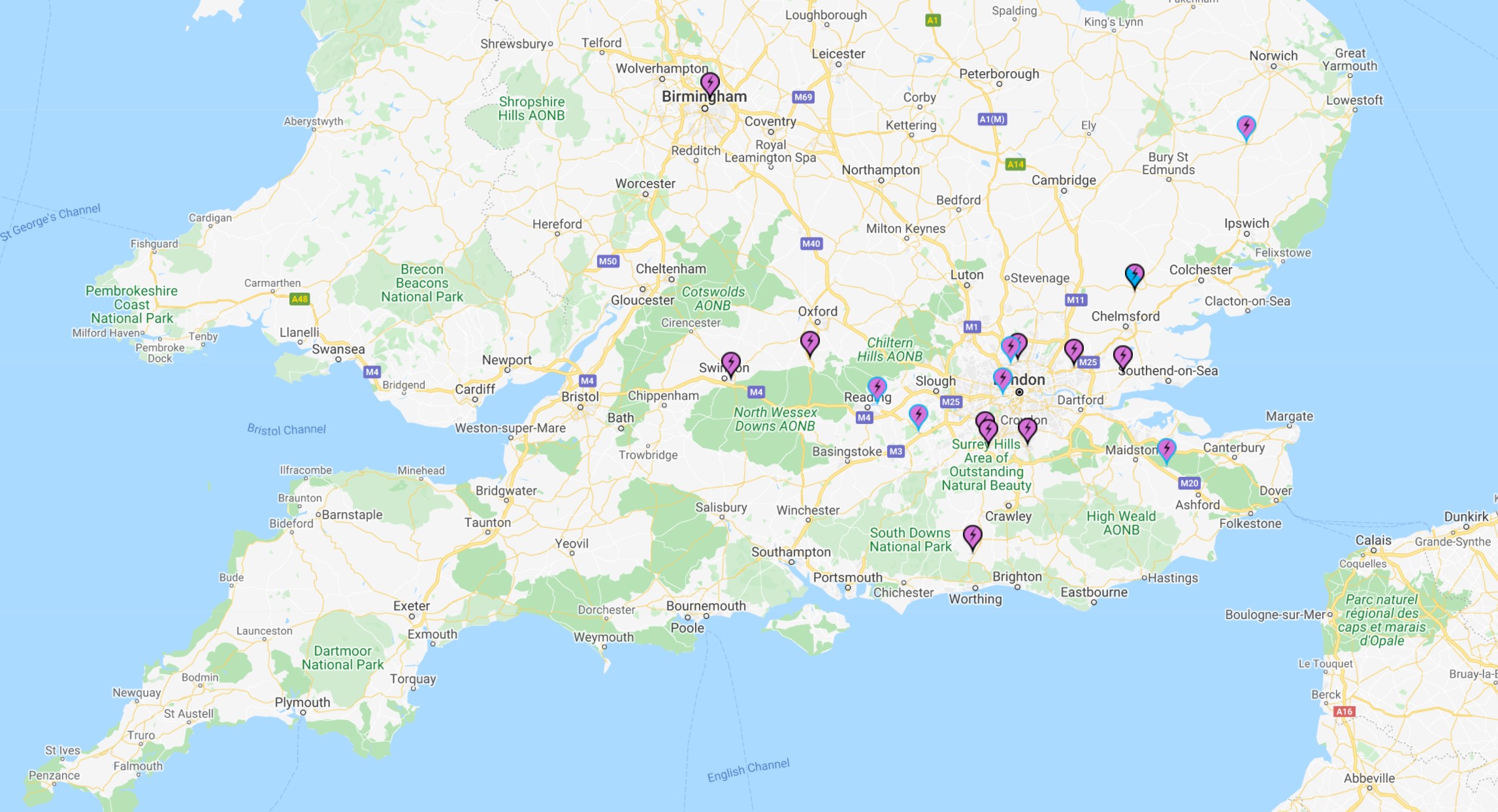
Take a look at the map above, showing 100kW CHAdeMO charging locations in Wales and South England, and you’ll see what I mean. Not every charger is there, and it doesn’t include chargers that utilize a different connector, but it’s a good representation of how different the infrastructure is compared to 50kW charging points - which you can see below:
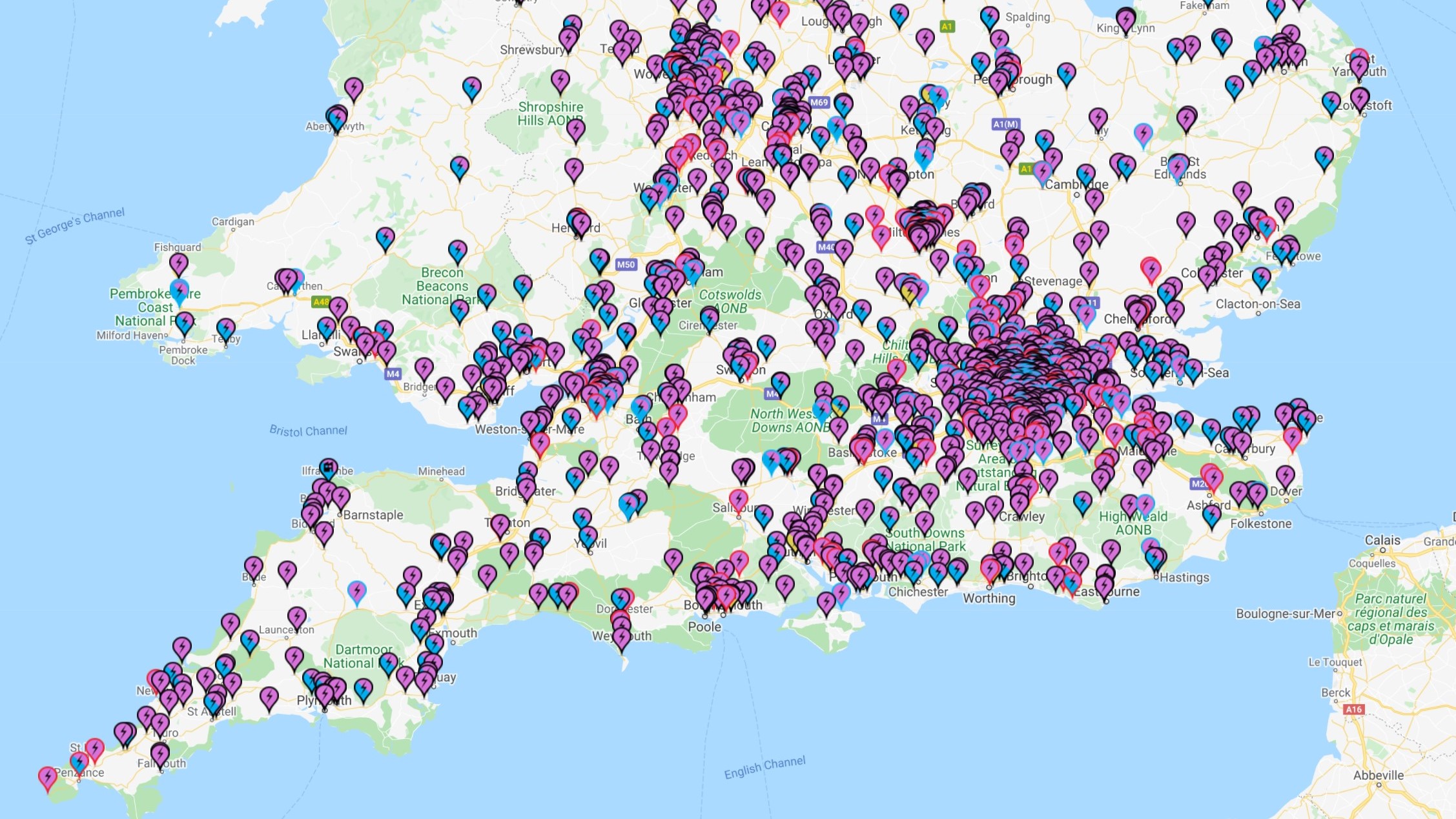
Getting back home
The concept of ‘range anxiety’ has always been associated with plug-in electric vehicles, and in recent years there’s been some debate on whether it’s actually real or not. In my experience it absolutely is.
My return journey didn’t have the best start, since I was stuck for about 15 minutes waiting for my turn with the rapid charger. It could have been a lot worse, since I was able to use a 7kW ‘fast’ charger while I waited for that Tesla’s owner to return.
I probably could have made it the 20 miles to the next rapid charger, but I didn’t want to risk it. While that period didn’t last very long, it’s one of those feelings EV owners must have to deal with on a regular basis.
I filled the Leaf up to 80% of my total charge, and while that wasn’t enough to get me all the way home, it was enough to get me back to the original rapid charger I stopped at on my way to Wales.
Road closures also meant Google Maps sent me down a lot of very windy narrow rural roads which aren’t suited to high speed driving — no matter what the speed limit, and the impatient drivers behind me, might think.
While that didn’t go down so well from a time perspective, it worked out pretty nicely for my battery. I ended up back at my original service station with 50% of my battery left, which the car thought would get me another 80 miles. It was only 74 miles home, but my new experience told me that it was be very stupid to risk it. Not when I would be back to driving at 70 mph.

I didn’t do a full charge this time, because it was almost 7pm and I wanted to get home. So I figured I’d see what would happen after 25 minutes of recharging. After all, there were other chargers along my route home, and I could stop if I really needed to.
I got home with 12% charge remaining. It definitely felt as though my power efficiency was better this way round, which I pin on two different facts. The first was that my average speed dropped to between 60 and 65mph as the traffic built up. I also wasn’t lazy, and decided I’d see how far I got without the Leaf’s smart cruise control switched on. Maybe it helped, maybe it didn’t, but all I know is that I was the one in complete control over my car’s speed — not some computer that didn’t know how to coast.
Still the closer I got to home, and the lower range estimate dipped, the more worried I got..
The main source of my anxiety came from passing the signs telling me how far I was from the various service stations. It felt like the scene in a terrible movie where the protagonists ignore a “last gas for 300 miles” sign and end up getting stranded in the desert.
I really didn’t want to have to stop and recharge for a fourth time, even if it wasn’t a huge break. But I also didn’t want to get stranded by the side of the road because of my own stubbornness. Thankfully it worked out, but there were a few times when the mileage was ticking down a little too quickly for comfort.
Bottom Line
It wasn’t a terrible trip, by any means, but it did prove to me that electric vehicles do have limitations when it comes to driving long distances. Or at least, driving those long distances at high speeds. I completely underestimated how much my range would decline while driving on the motorway. As far as trialling long distance driving goes, my Leaf did not do so well. So it’s a good thing I don’t plan on doing it very often.
I got in touch with Nissan to ask them about my trip, and apparently what I experienced tracks with how the 40kWh Nissan Leaf is supposed to behave. The company pointed out that how far you can go on a single charge will depend on driving conditions and your own driving behavior. Much as it would with a full tank of gas.

There is a range calculator that can give you an idea on how far you will go based on how your average speed, what mode the car is in, whether you’ve got climate control switched on, and so on. According to that, my car would only make it 108 miles travelling at 65mph. It’s not ideal, but it does seem fairly accurate compared to my own trip.
I still love the Nissan Leaf, and even knowing what I now know about its range, I still probably wouldn’t have picked up a model with the larger 62kWh battery. Frankly I don’t need to go long distances very often, and I didn’t see much point in paying an extra several thousand pounds for the privilege.
It was an adventure either way, and I learned a few more things about the car in the process. Next time I’m off to drive a long way I’ll be a little bit better prepared. At least I won’t have to travel into the middle of nowhere to see my brother get married again. Well I certainly hope not, for his sake.
- More: Apple Car may have found its production partner.
- I took a 500-mile trip in an EV — but range anxiety was the least of my problems.

Tom is the Tom's Guide's UK Phones Editor, tackling the latest smartphone news and vocally expressing his opinions about upcoming features or changes. It's long way from his days as editor of Gizmodo UK, when pretty much everything was on the table. He’s usually found trying to squeeze another giant Lego set onto the shelf, draining very large cups of coffee, or complaining about how terrible his Smart TV is.
